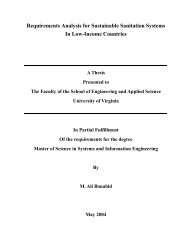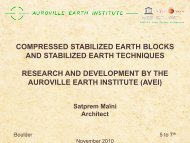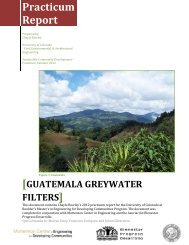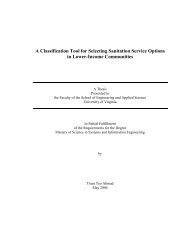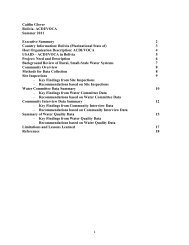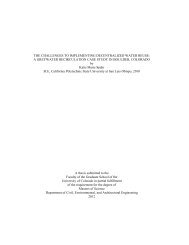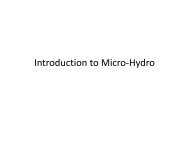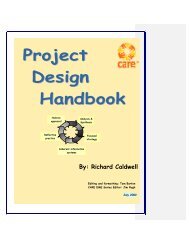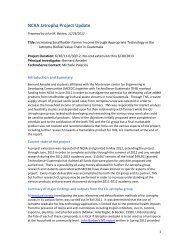SCEBs - University of Colorado Boulder
SCEBs - University of Colorado Boulder
SCEBs - University of Colorado Boulder
You also want an ePaper? Increase the reach of your titles
YUMPU automatically turns print PDFs into web optimized ePapers that Google loves.
6. Conclusions<br />
6.1. Summary<br />
Standardizing soil as an alternative building material is critical to developing<br />
technology which can be adopted and implemented wherever affordable housing is<br />
needed. Earthen building has proven itself to be widely available, reliable, and<br />
economical. This thesis provides a foundation for developing an appropriate standard <strong>of</strong><br />
care applied to SCEB technology. It outlines the current industry understanding,<br />
available uses, key components, as well as the strengths and weaknesses related to<br />
modern earthen building techniques. The proposed testing methodology was applied to<br />
soil samples provided by the Crow and Ute Mountain Ute tribes through funding<br />
provided by the DEMD. The findings and conclusions <strong>of</strong> this thesis are specific to the<br />
soils tested as indicated and may not apply to all potential earthen building materials.<br />
The author wishes to highlight the current deficiencies contained in the limited<br />
number <strong>of</strong> codes intended for earthen building regulation. Most building codes are<br />
limited to specifying strength property requirements only. However, SCEB behavior<br />
related to durability and deformability is highly important and relatively unknown or<br />
quantified. The effects <strong>of</strong> wetting/drying and freezing/thawing are inherent risks when<br />
applying SCEB technology in cold and wet climates. These durability effects are not<br />
addressed by current codes. Important scaling issues directly affecting material<br />
properties, such as compressive strength, are also not addressed. In addition, current<br />
building codes do not specify allowable limits regarding soil particle size distribution or<br />
76



